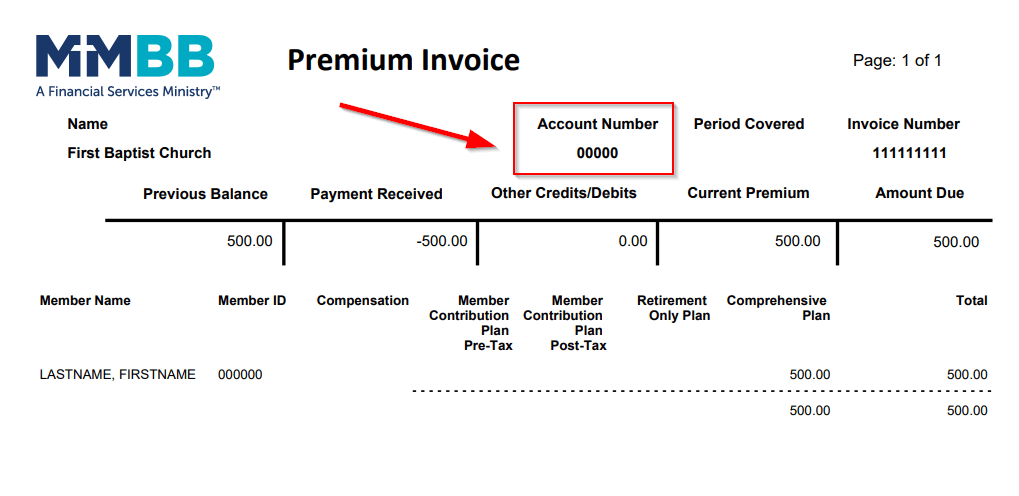The Markets (as of market close July 31, 2025)
The economy was generally solid in July, with the stock market continuing its upward trend from the second quarter, albeit with some volatility. Both the S&P 500 and the NASDAQ reached record highs in July, buoyed by strong corporate earnings and positive economic sentiment. For much of the month, large caps generally outperformed smaller companies, although the Russell 2000 managed to close July marginally higher.
Inflation remained "somewhat elevated." As of June 2025, the headline Consumer Price Index (CPI) was at 2.7% year over year, while core inflation (excluding food and energy) was at 2.9%. While headline inflation ticked up, core inflation on an annualized basis in Q2 was slower at 2.4% compared to 3.0% in Q1. The personal consumption expenditures (PCE) price index rose 2.6% since June 2024, 0.2 percentage point above the annual rate for the period ended in May. Core prices advanced 2.8% over the last 12 months, unchanged from the comparable period ended in May. The Federal Reserve's target inflation rate remained at 2.0%.
The U.S. economy showed signs of renewed growth in the second quarter of 2025 following a modest decline in the first quarter. The gross domestic product (GDP) rose 3.0% in the second quarter following a 0.5% contraction in the first quarter (see below). Consumer spending rose 1.4% in the second quarter after ticking up 0.5% in the first quarter. Through the first half of the year, GDP's annualized growth rate is projected to be 1.3%. Trade policies continued to be a significant factor for the economy and for investors. The market's deepest decline in 2025 occurred after President Trump's new tariffs announcement in April, though investor sentiment improved following delays or reductions in most tariffs. The International Monetary Fund (IMF) upgraded its global growth outlook for 2025, partly due to early stockpiling ahead of U.S. tariffs and lower-than-expected effective U.S. tariff rates. However, the IMF flagged downside risks if trade shocks worsen and warned that inflation could remain above target in the United States.
The labor market remained solid, with the unemployment rate staying historically low. In June, the Bureau of Labor Statistics reported 147,000 new jobs, with the unemployment rate dipping to 4.1%. This was higher than the consensus forecast and defied expectations of a rise. Wages rose 3.7% over the past 12 months ended in June. The number of job openings fell by nearly 275,000 in June to 7.4 million, which was roughly in line with expectations. The latest unemployment data showed total claims paid through mid-July increased by 72,000 from a year earlier (see below).
According to FactSet, with roughly 34% of S&P 500 companies reporting, 80% of companies reported positive earnings per share (EPS). However, the year-over-year earnings growth rate for the S&P 500 is 6.4% thus far, which, if it holds, would be the lowest earnings growth rate since the first quarter of 2024. Communication services, information technology, and financials are sectors reporting annualized earnings growth, while six sectors, led by energy, are reporting an annualized decline in earnings.
The real estate market had mixed results in June, with sales of existing homes falling, while new home sales rose. Mortgage rates remained elevated. According to Freddie Mac, the average 30-year fixed-rate mortgage was 6.72% as of July 31, down 0.2 percentage point from the rate one week before and below the rate of 6.71% one year ago. The 30-year fixed-rate mortgage showed little movement, remaining within the same narrow range for the fourth consecutive week. Continued economic growth, along with moderating house prices and rising inventory, bodes well for buyers and sellers alike.
Industrial production advanced in June, while also increasing over the last 12 months. Manufacturing output and utilities each increased, while mining contracted in June. Purchasing managers reported manufacturing expanded in June, with operating conditions improving to the greatest degree in over three years. Activity in the services sector also expanded in June, but at a slower rate than in the previous month.
The bond market in July was primarily influenced by a combination of factors, including the Federal Reserve's monetary policy, economic data, geopolitical events, and ongoing tariff discourse. Ten-year Treasury yields closed the month higher, moving modestly throughout most of the month. The two-year note, which is more sensitive to Fed policy, closed July at about 3.9%, up from 3.7% at the end of June. The dollar index was muted for much of July, only to rise at the end of the month, while posting its first month-over-month gain of the year. Gold prices rose in July, marking their sixth straight monthly gain. Crude oil prices increased for the month, reaching six-week highs along the way. The retail price of regular gasoline was $3.123 per gallon on July 28, $0.041 below the price a month earlier and $0.361 lower than the price a year ago.
MARKET SUMMARY
| MARKET/INDEX |
2024 CLOSE |
PRIOR MONTH |
AS OF 7/31 |
MONTHLY CHANGE |
YTD CHANGE |
| DJIA |
42,544.22 |
44,094.77 |
44,130.98 |
0.08% |
3.73% |
| NASDAQ |
19,310.79 |
20,369.73 |
21,122.45 |
3.70% |
9.38% |
| S&P 500 |
5,881.63 |
6,204.95 |
6,339.39 |
2.17% |
7.78% |
| RUSSELL 2000 |
2,230.16 |
2,175.04 |
2,211.65 |
1.68% |
-0.83 |
| GLOBAL DOW |
4,863.01 |
5,519.07 |
5,507.67 |
-0.21% |
13.26% |
| FED. FUNDS |
4.25%-4.50% |
4.25%-4.50% |
4.25%-4.50% |
0 bps |
0 bps |
| 10-YEAR TREASURIES |
4.57% |
4.23% |
4.36% |
13 bps |
-21 bps |
| US DOLLAR-DXY |
108.44 |
96.80 |
100.06 |
3.37% |
-7.73% |
| CRUDE OIL-CL=F |
$71.76 |
$65.09 |
$69.45 |
6.70% |
-3.22% |
| GOLD-GC=F |
$2,638.50 |
$3,319.30 |
$3,344.70 |
0.77% |
26.77% |
Chart reflects price changes, not total return. Because it does not include dividends or splits, it should not be used to benchmark performance of specific investments.
Latest Economic Reports
- Employment: Job growth exceeded expectations in June after adding 147,000 new jobs (144,000 in May). The June total was in line with the average monthly gain of 146,000 over the prior 12 months. Employment was revised up by a combined 16,000 for April and May. In June, the unemployment rate ticked down 0.1 percentage point to 4.1%. The number of unemployed persons in June, at 7.0 million, was 222,000 under the May estimate. The number of long-term unemployed (those jobless for 27 weeks or more) increased by 190,000 to 1.6 million, largely offsetting the May decrease. These individuals accounted for 23.3% of all unemployed persons. The labor force participation rate in June fell 0.1 percentage point from May to 62.3%. The employment-population ratio in June, at 59.7%, was unchanged from the May figure. Average hourly earnings increased by $0.08, or 0.2%, to $36.30 in May. Over the last 12 months, average hourly earnings rose by 3.7%. The average workweek edged down 0.1 hour to 34.2 hours in June.
- There were 218,000 initial claims for unemployment insurance for the week ended July 26, 2025. During the same period, the total number of workers receiving unemployment insurance was 1,946,000. A year ago, there were 248,000 initial claims, while the total number of workers receiving unemployment insurance was 1,874,000.
- FOMC/interest rates: Following its meeting in July, the Federal Open Market Committee held the federal funds target rate range at 4.25%-4.50% for a fifth straight time, although two governors dissented in favor of a 25-basis-point cut. While the Committee noted that fluctuations in net exports continued to influence the data, recent indicators suggest that current economic activity has moderated. This assessment differs from more recent prior statements wherein the Committee described the economy as proceeding at a solid pace. Nevertheless, the FOMC pointed out that the unemployment rate remained low although inflation was somewhat elevated. Overall, the Committee indicated that uncertainty about the economic outlook persisted.
-
GDP/budget: The economy, as measured by gross domestic product, advanced at an annualized rate of 3.0% in the second quarter, rebounding from a 0.5% decrease in the first quarter of 2025. Consumer spending, as measured by personal consumption expenditures, drove the second-quarter increase, climbing 1.4% after ticking up 0.5% in the first quarter. Spending rose for both services (1.1%) and goods (2.2%). After surging 37.9% in the first quarter, imports (which are a negative in the calculation of GDP) fell 30.3% in the second quarter. However, exports also declined in the second quarter, falling 1.8%, offsetting a 0.4% advance in the first quarter. Private investment declined 15.6% in the second quarter, cutting into the 23.8% gain in the prior quarter.
- June saw the federal budget register a surplus of $27 billion, while the deficit over the last 12 months was $1,337 billion. June receipts were $526 billion versus $466 billion a year ago. Tariffs added $27 billion to receipts in June. Government outlays in June were $499 billion versus $537 billion a year ago. The deficit through the first nine months of fiscal year 2025, at $1,337 billion, was above the $1,273 billion deficit over the first nine months of the previous fiscal year. Thus far for fiscal year 2025, individual income tax receipts added up to $2,059 billion, while outlays for Social Security totaled $1,181 billion.
- Inflation/consumer spending: According to the latest Personal Income and Outlays report, personal income rose 0.3% in June (-0.4% in May), while disposable personal income also advanced 0.3% (-0.5% in May). Consumer spending increased 0.3% in June after being unchanged the previous month. In June, the PCE price index rose 0.3% as did the PCE price index less food and energy (core prices). The PCE price index rose 2.6% since June 2024, while core prices increased 2.8% over the same period. In June, prices for goods increased 0.3% and services rose 0.2%. Food prices increased 0.3%, while energy prices increased 0.9%.
-
The Consumer Price Index rose 0.3% in June after increasing 0.1% in May. Over the 12 months ended in June, the CPI rose 2.7%, 0.3 percentage point above the rate for the 12 months ended in May. Core prices (excluding food and energy) rose 0.2% last month and 2.9% since June 2024. Prices for shelter rose 0.2% in June (+0.3% in May) and were the primary factor in the monthly increase. Food rose 0.3% last month, the same increase as in May. Energy prices increased 0.9% in June as gasoline prices rose 1.0% over the month. Over the last 12 months ended in June, food prices increased 3.0%, energy prices declined 0.8%, and shelter prices rose 3.8%.
-
Prices at the wholesale level were unchanged in June following an upwardly revised 0.3% increase in May, according to the Producer Price Index. Producer prices increased 2.3% for the 12 months ended in June after rising 2.6% for the 12-month period ended in May. Excluding food and energy, producer prices were unchanged in June but increased 2.6% for the year. In June, prices for goods increased 0.3% from the previous month and rose 1.7% since June 2024. Last month saw prices for services inch down 0.1% after a revised 0.4% increase in May. Prices for services rose 2.7% for the 12 months ended in June, a decrease of 0.5 percentage point from the 3.2% increase over the 12 months ended in May.
- Housing: Sales of existing homes decreased 2.7% in June but were unchanged from the June 2024 figure. The median existing-home price, at $435,300, was a record high for the month of June, and marked the 24th consecutive month of yearly gains. The median existing-home price was above the May estimate of $423,700 and 2.0% higher than the year-earlier price of $426,900. Unsold inventory of existing homes in June represented a 4.7-month supply at the current sales pace, marginally longer than the May supply of 4.6 months and above the 4.0-month supply from a year ago. Sales of existing single-family homes declined 3.0% in June but were 0.6% above the estimate from June 2024. The median existing single-family home price was $441,500 in June ($428,800 in May), and 2.0% above the June 2024 estimate of $432,900.
- New single-family home sales rose 0.6% in June but were 6.6% below the June 2024 figure. The median sales price of new single-family houses sold in June was $401,800 ($422,700 in May), which was lower than the June 2024 estimate of $414,000. The June average sales price was $501,000 ($511,500 in May), up from the June 2024 average sales price of $499,500. Inventory of new single-family homes for sale in June represented a supply of 9.8 months at the current sales pace, 1.0% above the May 2025 estimate of 9.7 months, and 16.7% above the June 2024 estimate of 8.4 months.
- Manufacturing: Industrial production increased 0.3% in June after being unchanged in April and May. Manufacturing output increased 0.1% last month after rising 0.3% in May. Mining decreased 0.3% in June, while utilities rose 2.8%. Over the 12 months ended in June, total industrial production was 0.7% above its year-earlier reading. Since June 2024, manufacturing increased 0.8%, mining advanced 1.6% but utilities fell 0.8%.
- New orders for durable goods fell 9.3% in June after increasing 16.5% in May. Transportation equipment drove the June decline after falling 22.4%. New orders excluding transportation increased 0.2%. Excluding defense, new orders decreased 9.4%. For the 12 months ended in June, durable goods orders advanced 7.9%.
- Imports and exports: Import prices advanced 0.1% in June following a 0.4% (revised) decrease in May. Prices for imports declined 0.2% for the 12 months ended in June. Import fuel prices decreased 0.7% in June. Import fuel prices fell 15.7% over the past 12 months. Export prices increased 0.5% in June. Export prices increased 2.8% from June 2024 to June 2025.
- The international trade in goods deficit in June was $86.0 billion, 10.8% below the May estimate. Exports of goods for June were 0.6% below May exports. Imports of goods for June were 4.2% under May imports. Over the 12 months ended in June, exports rose 3.6%, while imports decreased 2.5%.
- The latest information on international trade in goods and services, released July 3, saw the goods and services deficit expand 18.7% in May to $71.5 billion. Exports of goods decreased 4.0% to $279.0 billion in May. Imports of goods declined 0.1% to $350.5 billion. For the 12 months ended in May 2025, the goods and services deficit increased $175.0 billion, or 50.4%, from the same period in 2024. Exports increased $73.6 billion, or 5.5%. Imports increased $248.7 billion, or 14.8%.
- International markets: European stocks climbed at the end of July after the European Union reached a trade deal with the United States, averting a potentially damaging trade war. European price levels have gradually increased, with annual inflation rising to 2.0% in June from a year earlier. European economic growth has slowed, with gross domestic product ticking up a modest 0.1% in the second quarter. July saw mixed performance in China's stock market and economic indicators, influenced by ongoing trade dynamics, domestic policies, and a cautious global outlook. In July, the STOXX Europe 600 Index ticked up 0.8%; the United Kingdom's FTSE rose 3.8%; Japan's Nikkei 225 Index gained 3.2%; and China's Shanghai Composite Index climbed 3.3%.
- Consumer confidence: Consumer confidence improved by 2.0 points in July to 97.2 from 95.2 in June. The Present Situation Index, based on consumers' assessment of current business and labor market conditions, decreased 1.5 points to 131.5. The Expectations Index, based on consumers' short-term outlook for income, business, and labor market conditions, rose 4.5 points to 74.4 but was still below the threshold of 80 that typically signals a recession ahead.
Eye on the Month Ahead
August is usually a relatively slow month in the market as investors focus on vacation plans before the end of the summer. However, it will be interesting to see whether, and to what extent, the White House is able to negotiate trade deals that would lead to the reduction of tariffs.
Data sources: Economic: Based on data from U.S. Bureau of Labor Statistics (unemployment, inflation);
U.S. Department of Commerce (GDP, corporate profits, retail sales, housing); S&P/Case-Shiller 20-City Composite Index (home prices); Institute for Supply Management (manufacturing/services). Performance: Based on data reported in WSJ Market Data Center (indexes); U.S. Treasury (Treasury yields); U.S. Energy Information Administration/Bloomberg.com Market Data (oil spot price, WTI Cushing, OK); www.goldprice.org (spot gold/silver); Oanda/FX Street (currency exchange rates). News items are based on reports from multiple commonly available international news sources (i.e., wire services) and are independently verified when necessary with secondary sources such as government agencies, corporate press releases, or trade organizations. All information is based on sources deemed reliable, but no warranty or guarantee is made as to its accuracy or completeness. Neither the information nor any opinion expressed herein constitutes a solicitation for the purchase or sale of any securities, and should not be relied on as financial advice. Forecasts are based on current conditions, subject to change, and may not come to pass. U.S. Treasury securities are guaranteed by the federal government as to the timely payment of principal and interest. The principal value of Treasury securities and other bonds fluctuates with market conditions. Bonds are subject to inflation, interest-rate, and credit risks. As interest rates rise, bond prices typically fall. A bond sold or redeemed prior to maturity may be subject to loss. Past performance is no guarantee of future results. All investing involves risk, including the potential loss of principal, and there can be no guarantee that any investing strategy will be successful.
The Dow Jones Industrial Average (DJIA) is a price weighted index composed of 30 widely traded blue-chip U.S. common stocks. The S&P 500 is a market cap weighted index composed of the common stocks of 500 largest, publicly traded companies in leading industries of the U.S. economy. The NASDAQ Composite Index is a market-value weighted index of all common stocks listed on the NASDAQ stock exchange. The Russell 2000 is a market-cap weighted index composed of 2,000 U.S. small-cap common stocks. The Global Dow is an equally weighted index of 150 widely traded blue-chip common stocks worldwide. The U.S. Dollar Index is a geometrically weighted index of the value of the U.S. dollar relative to six foreign currencies. Market indexes listed are unmanaged and are not available for direct investment.
IMPORTANT DISCLOSURES
Broadridge Investor Communication Solutions, Inc. does not provide investment, tax, legal, or retirement advice or recommendations. The information presented here is not specific to any individual’s personal circumstances.
To the extent that this material concerns tax matters, it is not intended or written to be used, and cannot be used, by a taxpayer for the purpose of avoiding penalties that may be imposed by law. Each taxpayer should seek independent advice from a tax professional based on his or her individual circumstances.
These materials are provided for general information and educational purposes based upon publicly available information from sources believed to be reliable — we cannot assure the accuracy or completeness of these materials. The information in these materials may change at any time and without notice.








